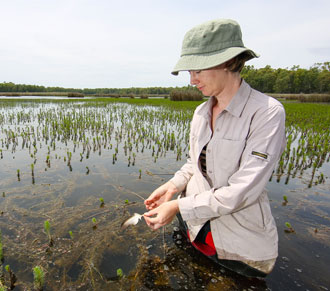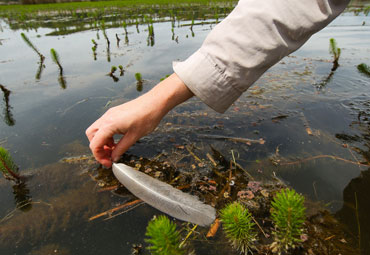Modern nuclear techniques can be used to provide useful information about the nutritional ecology and habitats of birds.
The stable isotope analysis of carbon and nitrogen are measured for nutritional information about the bird’s diet. Isotopes of carbon, nitrogen, oxygen and hydrogen are linked to water sources.
High resolution x-ray fluorescence identifies the elements in a sample quickly and non-invasively. The core scanner also takes high resolution colour images of the sample. Researchers expect to find silicon, phosphorous, sulphur, chlorine, potassium, calcium, titanium, iron, copper, zinc, arsenic and tin in the feathers.
Researchers are also washing the feathers to detect zooplankton that is consumed by some water birds.
The Australian Nuclear Science and Technology Organisation (ANSTO) and University of New South Wales (UNSW) environmental researchers are dedicated to better understanding our environment to make improvements in areas such as wetland management, water resource management, plastics pollution, air pollution and climate change.
Learn more about ANSTO's environmental research at:
https://www.ansto.gov.au/ResearchHub/IER/index.htm
Learn more about UNSW’s environmental research at:
https://www.ecosystem.unsw.edu.au/

